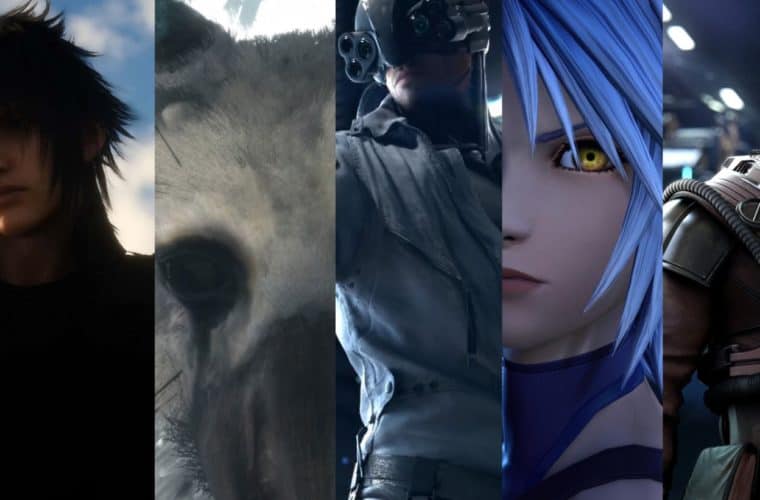“It’s been over 2077 days since we announced our plan to develop Cyberpunk 2077.” This is how CD Projekt Red started their letter to fans, hidden within the trailer they dropped at E3. Cyberpunk’s original trailer was in 2013, but the studio announced their plans to develop the property even earlier. Six years (and counting!) may feel like an eternity, but it’s far from the longest wait we’ve had for a game.
From JRPGS to trash-talking shooters, let’s forget our impatience for Cyberpunk by looking at some of the longest waits in gaming history.

Final Fantasy XV, 2006-2016
2006 was a thrilling time to be a Final Fantasy fan. Not only was Final Fantasy XIII announced, it debuted alongside a trailer for an entirely separate game, Final Fantasy XIII Versus. Versus promised to be a dark adventure with real-time combat and an enigmatic protagonist. But as time stretched on, Versus missed a concerning number of events. Square Enix promised that development was continuing (first it was a PS3 exclusive, then it wasn’t, then it was again…), but it was easy to lose hope as the years stretched on.
In 2013, Square Enix dropped the pretense. FF XIII Versus was dead, but not gone; it was now an entirely new entry in the series, Final Fantasy XV. But according to the studio, “it wasn’t coming any time soon”. That statement was apt. For years, trickles of information accompanied by delays kept fans anxiously awaiting concrete information. Finally, seven months after our cover story, FF XV released in November of 2016. All in all, it weathered its ten-year development pretty well! Although we had some nits to pick, a road trip with Noctis and his pals was a satisfying end to a decade long journey.
Joe documented the entire history of the development in exhaustive detail, if you’re interested to go deeper on every time we were disappointed by the lack of a Final Fantasy.
Too Human, 1999-2008
Perhaps better known for its delays than its mediocre action, Too Human started development in 1999 for the original Playstation. Pitched as a sci-fi tale set in the distant future, Too Human would spread its 90 hours of gameplay across four CD-ROMS. The game promised cybernetic enhancements and “60 minutes of cinematics,” but development stalled when developer Silicon Knights was acquired by Nintendo.
Although the studio announced intentions of bringing their sci-fi epic to Gamecube, five years later, we still knew nothing about Too Human. By then, Silicon Knights had worked on both Eternal Darkness: Sanity’s Requiem and Metal Gear Solid: The Twin Snakes, but it wasn’t until the studio partnered with Microsoft that we heard new details about this exciting RPG. In 2005, Silicon Knights said Too Human would not only be releasing for the Xbox 360, but would be a trilogy.
Nine years after its original announcement, Too Human released to reviews that were largely tepid and, occasionally, actively hostile. We gave it a 6.75 and said “you’ll likely never want to hear anything about Too Human again.” Even still, Silicon Knights promised they would complete their trilogy (which wasn’t really sci-fi anymore, but more of a mess of Norse mythology).
Ultimately, Epic Games’ lawsuit over the use of the Unreal Engine killed Too Human for good. As a result of the lawsuit, Silicon Knights was ordered to destroy all game code for any products using the Unreal Engine and Too Human was pulled from the Xbox Live Marketplace. The studio went bankrupt in 2014, likely sealing the fate of any further titles.

The Last Guardian, 2007-2016
For a team that had only released two prior games, Team Ico held an impressive reputation. Ico and Shadow of the Colossus, both PS2 titles, obtained a prestige that continues to this day. When Colossus first released, we said that it “breaks storytelling barriers none of us knew existed…this is the storytelling experience of the year.”
It follows, therefore, that Team Ico’s next game would be the subject of both enormous hype and intense scrutiny. We first saw The Last Guardian in a trailer at E3 2009 (a trailer which looks shockingly similar to the final product in 2016), but it had been in development for two years at that point. Unlike Final Fantasy or Too Human, the core concept of The Last Guardian never wavered; Fumito Ueda’s story of cooperation between a boy and a big cat/bird formed both the emotional core and gameplay focus of the game, but this commitment meant an abundance of technical issues.
Although the original trailer was actually running on a PS3, Ueda confirmed that it was rendered at half-speed, and then sped up to look normal. For the next several years The Last Guardian floundered, unable to hit the minimum required frame rates for playability. Although it never completely went quiet, the game was clearly in trouble. Ueda teased a gameplay demo in the Team Ico collection that never happened, then parted ways with Sony. Producers jumped ship. The Last Guardian continued to miss virtually every major gaming event. Execs continued to assure the industry that the game existed, statements of little comfort in the face of overwhelming evidence to the contrary.
In 2015, The Last Guardian surfaced again, relatively unchanged despite the leap in console generations. A trailer at E3 2015 promised the game would come out the following year and it did, eventually releasing in December 2016. The game still faced a number of technical issues, but it captured the magic promised in the original trailer, and made good on Fumito Ueda’s nine-year-old vision.
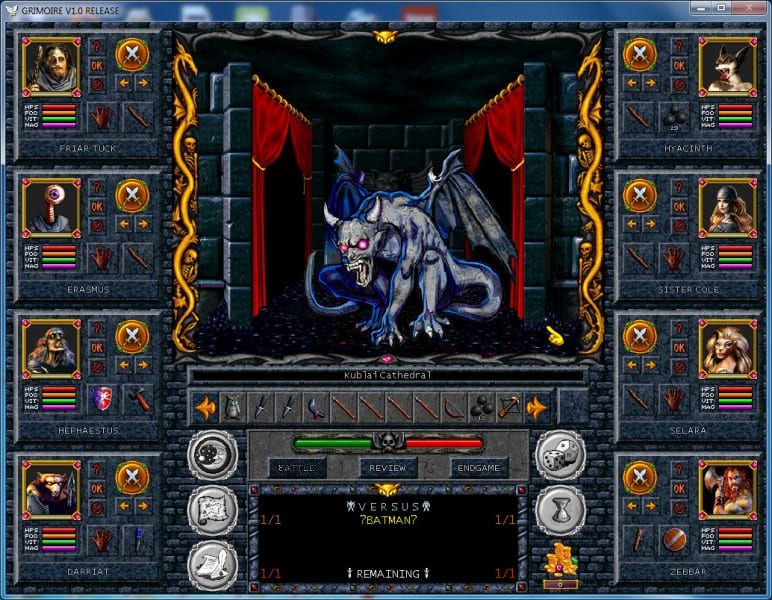
Grimoire: Heralds of the Winged Exemplar, 1997-2017
There’s probably a reason you haven’t heard of Grimoire. A passion project from a single developer, the game makes virtually no concessions to the modern player. Saying that the game is rooted in 90s CRPGs is misleading, because “rooted” implies growth. Grimoire is a 90s CRPG, it just ended up being released twenty years later.
Created by Cleveland Mark Blakemore, the game’s development isn’t nearly as well documented as larger projects. Announced in ‘97, one preview claimed it would be out later that year. It wasn’t. In 1998 there was a beta testing period, and then the game mostly disappeared until 2013 when Grimoire announced an indiegogo campaign. It raised about four percent of its $250,000 goal and promised a release later that year (again). Finally, along with an announcement that “the greatest roleplaying game of them all is finally ready,” the game dropped on Steam in 2017.
Grimoire: Heralds of the Winged Exemplar boasts that it has 600 hours of content. It also doesn’t have a manual. With deep character customization and an enormous breadth of locations, there may be 20 year’s worth of material hidden in the game. I just have no interest in finding it.
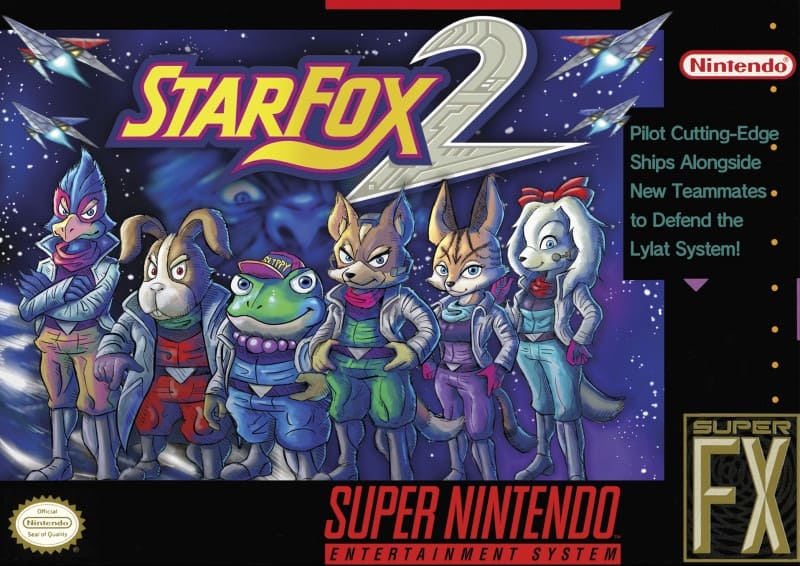
Star Fox 2, 1993-2018
Started almost immediately after 1993 original, Star Fox 2 was the victim of a relentless hardware cycle. The game’s ambitious goals, including randomized levels and real-time strategy elements, were powered by the SNES and its Super FX chip (the same type as used in Yoshi’s Island). And unlike everything else on this list, Star Fox 2 was essentially finished within its quoted development period.
Unfortunately, the tail-end of the SNES’s lifespan was also the beginning of true 3D graphics from consoles like the N64 and the Playstation. Fearing that Star Fox simply wouldn’t stand up to the comparison, Nintendo axed production entirely.
That would have been the end of the story, if not for a surprise announcement from Nintendo: The SNES Classic, a re-release of the publisher’s legendary console, would include the full Star Fox 2 in its entirety. Although the game’s ambitions were perhaps grander than its execution, the release of Star Fox 2 is an uncommon victory for anyone who values the history and preservation of classic titles.
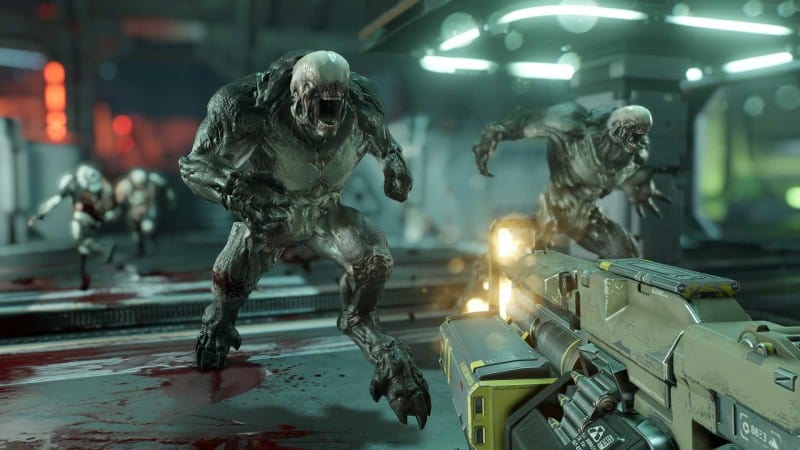
Doom, 2008-2016
Doom 4 will look better than Rage. John Carmack promised this in 2008 when announcing the development of the title, and he wasn’t lying; the game just took eight more years to prove him right.
Doom 4 struggled with identity for much of its development. The original pitch for the game was a cinematic, scripted, militaristic take on the franchise, a “Call of Doom” if you will. With Call of Duty 4: Modern Warfare’s release the previous year, making an FPS with setpieces and vehicle segments seemed like a recipe for success. But years later, low morale and direction from the heads of the studio prompted a complete reboot of the title.
The new question was what exactly this reboot would be. One studio head reportedly said that “Doom 4 can and should be as big as Skyrim.” Carmack said that “Doom means two things: demons and shotguns.”
The earliest we saw what would ultimately be the final version of the game came from a teaser in 2014. Doom’s final form was a far cry from its Call of Duty-inspired origins; the game is a true callback to the original games, eschewing story, lengthy dialogue, and even reloading for a pure first-person demon-killing experience. It kicks ass. Doom’s reboot was even successful enough to warrant a sequel, Doom: Eternal.
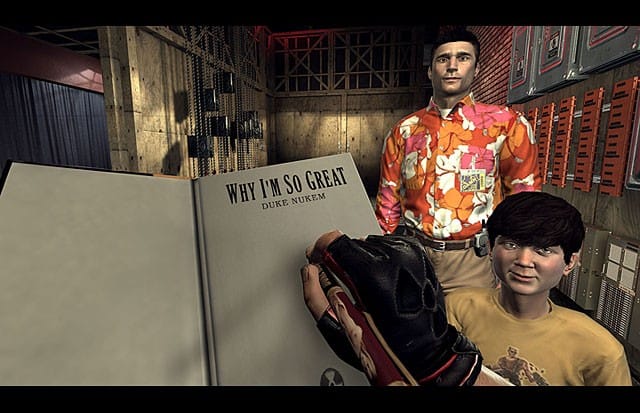
Duke Nukem Forever, 1997-2011
Perhaps the most infamous delayed game of them all, Duke Nukem Forever is a showcase of the perils of long development cycles. Duke Nukem 3D, released for the PC in 1996, was a smash hit. Almost immediately afterwards, 3D realms announced work on a sequel, intended to be finished in 1998 at the latest. They decided to work with the Quake II engine, but didn’t even receive code for the software before they starting mocking up potential screenshots.
Already having missed their 1998 projection, they jumped to the Unreal engine and continued to make slow progress. Videos and screens were still trotted out and received well, but had no end date in sight. In 2004, seven years after initially announced, Duke Nukem Forever reportedly jumped engines again, landing on Doom 3’s impressive tech (although the studio then denied the rumor). 3D realms continued to hemorrhage staff; even after the team’s heads spent millions of their own money, Forever made little perceivable progress.
In 2009, publisher Take-Two sued the studio for failing to deliver the game, and although it was settled in a manner that preserved the progress that had been made on the game, Duke seemed in his death throes. Salvation came from Gearbox Software, who added a multiplayer mode and gave it the final push out the door in 2011.
Forever is not a success story, however. The world had moved forward in the game’s 14-year development, and Duke had not. From dated gameplay systems to the character’s trademark misogyny, Forever can’t hide the weight of its bloated development.
Of course, long delays aren’t a thing of the past. Cyberpunk’s development cycle is at least seven years long at this point, but there are other games- several of which were seen this E3- that we’ve been waiting just as long for.

Beyond Good And Evil 2, 2008-???
Before Beyond Good and Evil was a way for Joseph Gordon-Levitt to get you to do free art for Ubisoft, it was a 2008 trailer without a release date. Ubisoft said the entire trailer, a two minute look at Jade and her piggy friend sitting in a desert, was rendered in-engine. And then, nine years later, we saw it again.
We don’t know what caused the hangup in development. Director Michel Ancel spent years away from the project, working on Rayman’s platforming reboots, but whether this was a choice by him or by Ubisoft is anyone’s guess. When Beyond Good and Evil 2 re-emerged last E3 as a pre-rendered trailer, Ancel said that it was effectively an entirely new and different game than the E3 trailer almost a decade earlier.
Among other things, this probably means that Beyond Good and Evil 2 is still a long ways off. This E3 brought another pre-rendered trailer, a reportedly impressive behind-closed-doors demo, and a beta promised for sometime next year. The game’s scope looks impressive, but that’s only a hindrance when it comes to development time.

Kingdom Hearts III, 2013-2019
Technically, we’ve only known about Kingdom Hearts III since its teaser trailer in 2013. However, given that the previous entry in the mainline series came out in 2005, it feels like we’ve been waiting a lot longer.
Series director Tetsuya Nomura hinted early on that he wouldn’t be able to focus on Kingdom Hearts before the completion of his current project. That project? Final Fantasy XIII Versus, and that didn’t reach completion quickly. Nomura actually left before Versus-turned-XV was completed. Now he’s continuing to direct Kingdom Hearts III while also working on another title: a remake of Final Fantasy VII. A remake that we’ve heard essentially nothing about since its announcement in 2015.
Kingdom Hearts III will release early next year. Probably.
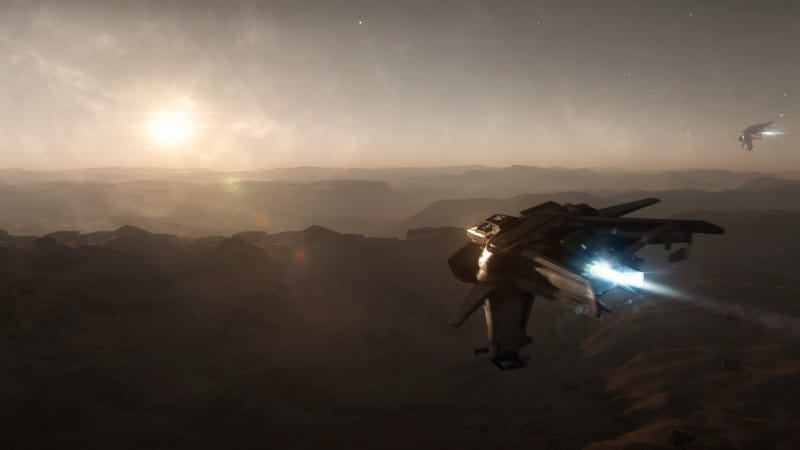
Star Citizen, 2012-?
Recently in the news for offering a pack of virtual spaceships for $27,000, Star Citizen is quickly becoming a lesson in the perils of crowdfunding. Climbing to fame through a wildly successful 2012 kickstarter, Star Citizen was originally pitched as a space-faring adventure with dogfighting and trading. This description has ballooned to include first-person shooting, procedurally generated planets, and a single-player campaign with Mark Hamill.
Throughout development, Star Citizen has missed essentially every deadline its set for itself. It shifted from CryEngine to Amazon’s Lumberyard Engine, which resulted in a lawsuit from Crytek. The game has released several betas, modules, and demos of its various systems (all of which are admittedly impressive). It’s also released constant ways to continue to spend money on it. Not only can players buy various models of spaceships with real money, they can also buy tracts of land on non-existent planets, or presumably just mail briefcases of cash to Chris Roberts.
Star Citizen has raised $188,000,000 thus far, with no signs of slowing down. Maybe it doesn’t even matter if it ever comes out.
READ MORE Shuffling your way onto another plane of reality. Cultist Simulator Review
READ MORE You’ll Be Watching NBA Games on A Magic Leap Headset Within Five Years
READ ALSO Simple Urban Legends or Haunted and mysterious videogames of history?
by Jacob Geller first posted on Jul 01, 2018

